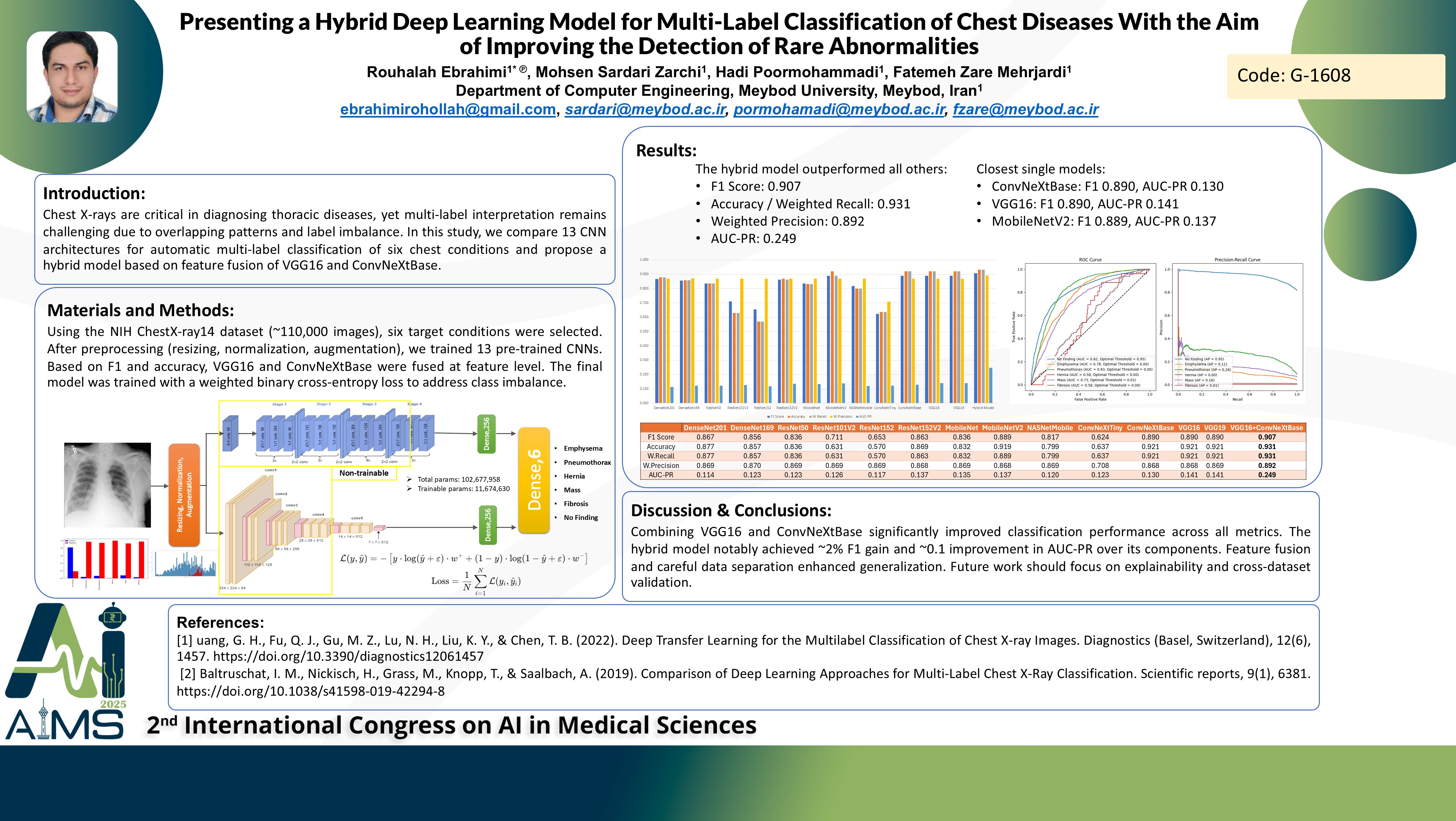Presenting a Hybrid Deep Learning Model for Multi-Label Classification of Chest Diseases With the Aim of Improving the Detection of Rare Abnormalities
Code: G-1608
Authors: Rouhalah Ebrahimi * ℗, Mohsen Sardari Zarchi, Hadi Poormohammadi, Fatemeh Zare Mehrjardi
Schedule: Not Scheduled!
Tag: Clinical Decision Support System
Download: Download Poster
Abstract:
Abstract
Background and Aims: Deep learning models have the ability to simultaneously diagnose multiple diseases in a single chest radiography image, which can greatly impact the speed and accuracy of diagnosis in the medical field. This study aimed to design a deep learning model for multi-disease classification of chest radiography images, enabling the recognition of multiple diseases at once. This model addresses six clinically significant classes which are: no findings, emphysema, pneumothorax, hernia, mass, and fibrosis. Method: This research utilized the NIH ChestX-ray8 dataset, which contains 112,120 images across 14 different categories. A stratified distribution approach was adopted to avoid patient overlap and data leakage, resulting in the following divisions: training (77,000 images); validation (16,500 images); and test (16,500 images). Pre-processing data included adjusting contrast, color saturation, and normalizing brightness, while augmentation techniques such as rotation, reflection, scaling, translation, and shifting were applied. The proposed model was a mix of ConvNeXtBase for hierarchical feature extraction and VGG16 for local pattern recognition. Learning with pretrained ImageNet weights and optimization with Adam were applied. A weighted cross-entropy loss function was used to mitigate imbalance between classes. Results: The hybrid ConvNeXtBase-VGG16 model outperformed thirteen other architectures including DenseNet, ResNet, MobileNet, NASNet, and EfficientNet particularly in detecting rare conditions such as Hernia and Fibrosis. The final performance results were: accuracy of 0.931, weighted F1-score of 0.9073, recall of 0.9310, precision of 0.8923, and an AUC-PR of 0.2486. Further analysis confirmed that the model is strong and reliable in detecting lung diseases based on sensitivity, specificity, and Youden index optimization. conclusion: This study highlights how combining multiple models, utilizing transfer learning and managing data imbalance can significantly improve the accuracy and reliability of automated diagnostic systems for chest diseases.
Keywords
Chest Diseases, ChestRadiography, DeepLearning, Multi-labelClassification, TransferLearning
